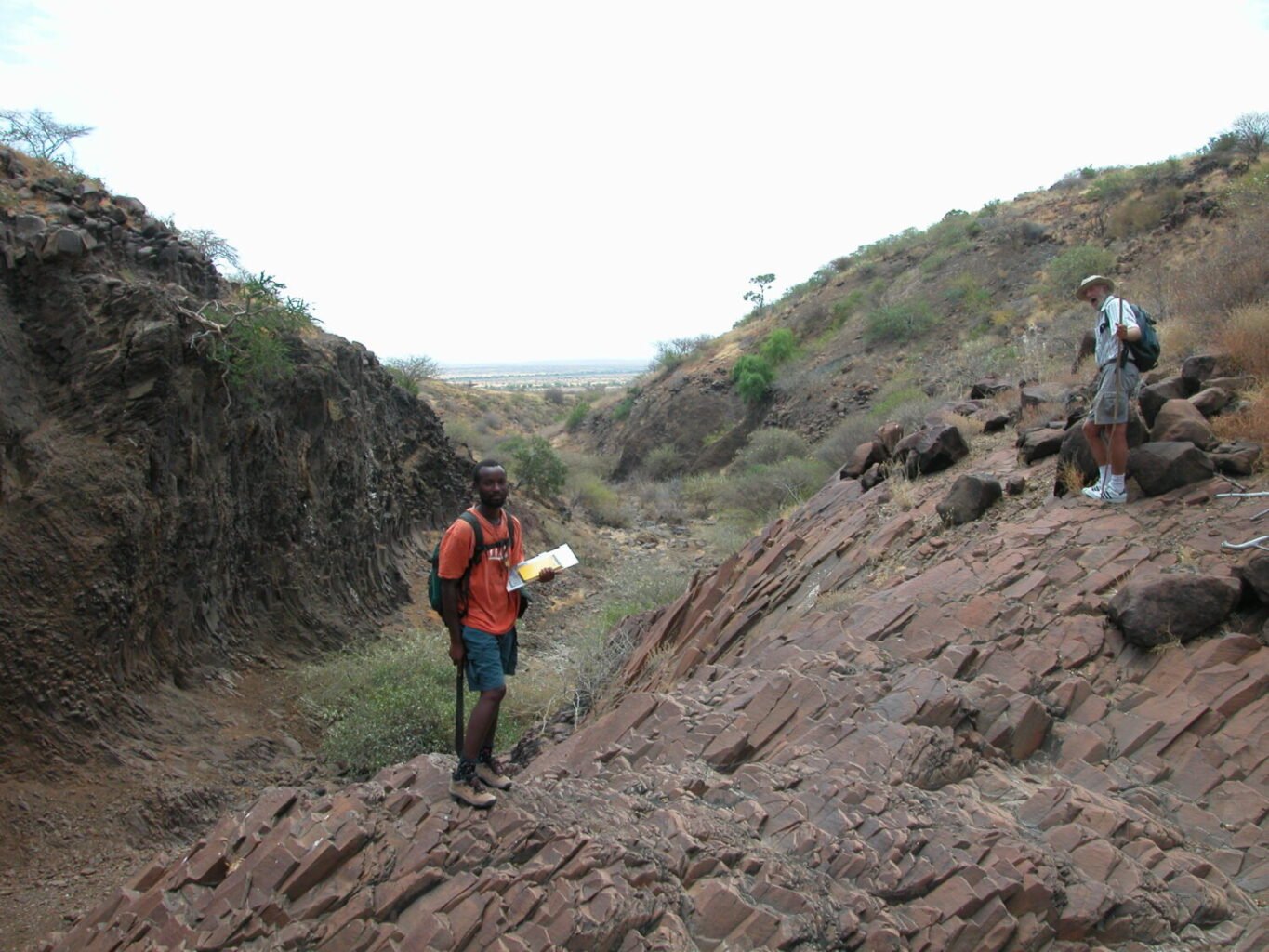
The Francis H. Brown African Scholarship Fund was established in 2018 to honor the life and work of Dr. Francis H. Brown, who served on The Leakey Foundation’s Scientific Executive Committee for 24 years. Frank Brown was an eminent geologist whose study of the Omo-Turkana basin helped build the timeline of human evolution. Brown devoted his career to mapping and analyzing the geology of northern Kenya and southern Ethiopia, and his work provided a way to place fossil finds in chronological order.
Dr. Patrick Gathogo, a former student and mentee of Frank Brown, was the first recipient of the Francis H. Brown African Scholarship. Dr. Gathogo is a geologist and research associate at Stony Brook University who is developing a new approach to geochronology that will extend the capability of the standard methods for dating hominid sites.
Dr. Gathogo earned his PhD as well as his undergraduate and master’s degrees at the University of Utah where Brown was a professor. He worked extensively in the Turkana Basin with Frank Brown, and he has also worked with Dr. Louise Leakey, who recommended Gathogo for this award. “There is no one I know who is better placed to carry the legacy of Frank Brown’s work forward in the Turkana Basin,” said Leakey, “and I wholly support the effort of Patrick Gathogo to get back to the field and into the lab to build on the work that Frank had accomplished.”
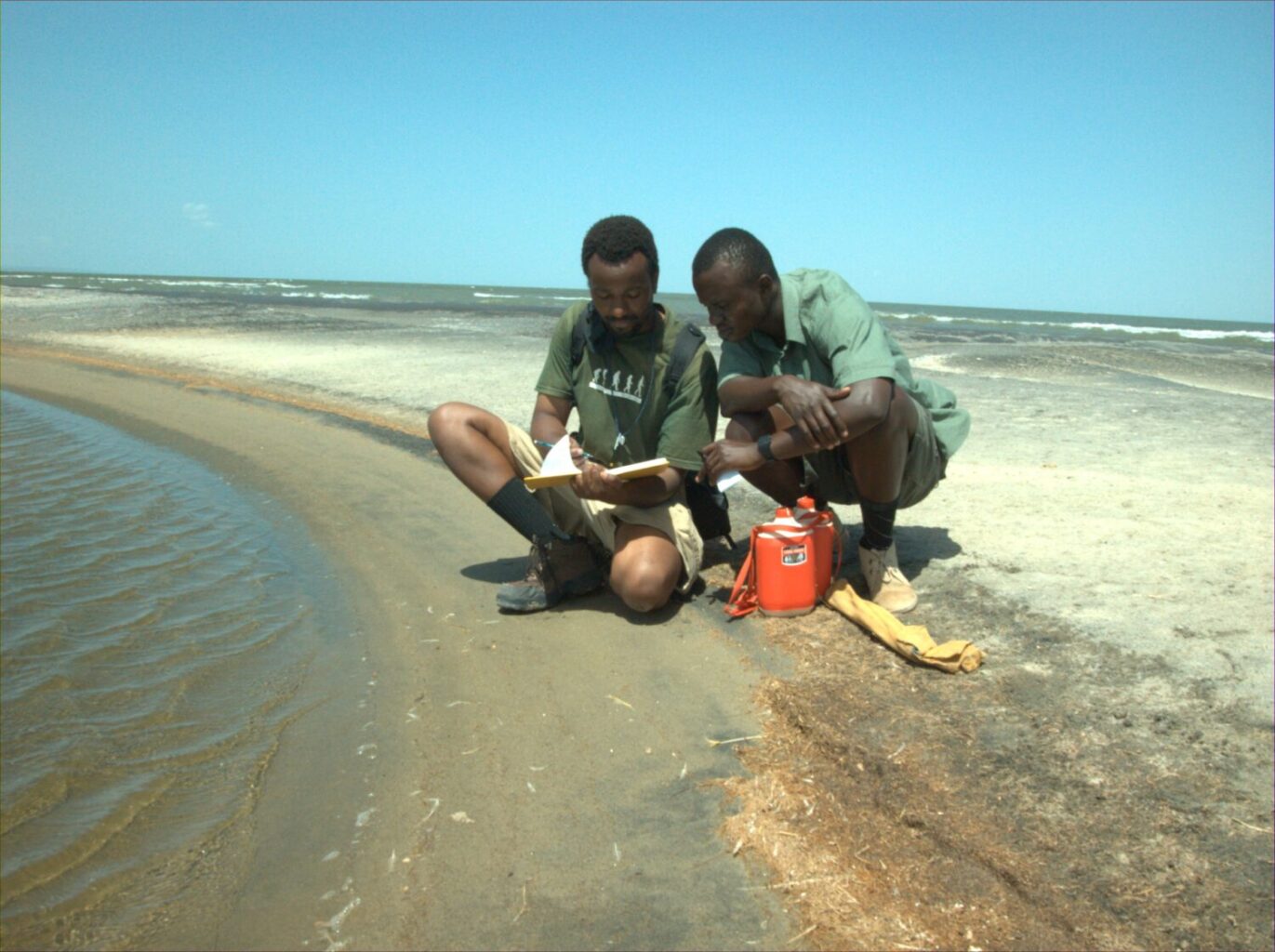
Q: When did you first meet Frank Brown?
I met Prof. Francis Brown during the summer of 1998 at a field camp that was led by Drs. Meave and Louise Leakey in the Lomekwi area of Turkana County, Kenya. I remember his arrival to the camp on a weekend afternoon very well because he was remarkably fluent in local languages and dialects with a full accent like the natives. The field crew and locals called him by a local name, “Mzee Mwasa,” which I thought was his real name at first. Actually, I also thought he was born and raised in Kenya. It was not until later at night during dinner when he was introduced as Prof. Francis Brown by Dr. Meave Leakey. The following day Dr. Meave Leakey presented me with the opportunity to accompany Prof. Brown for the entire duration of his fieldwork that summer. Drs. Richard, Meave, and Louise Leakey subsequently recommended and facilitated for me to become Prof. Brown’s geology student.
Q: How did Frank Brown influence your career?
First and most importantly, I owe my college education (BS, MS, and PhD) at the University of Utah to Prof. Brown. He helped with my tuition, accommodation, and living expenses, even using his personal finances. That provided me with a lot of time not only to focus on my college studies but also to gain practical experience in laboratory and field work with Prof. Brown. He started involving me in his research activities immediately after I joined the university. In fact, my first publications in Nature and the Journal of Human Evolution came from my participation as an undergraduate student. All of these factors provided a strong foundation that advanced my career. Additionally, after spending time with Prof. Brown as a mentee, his contagious enthusiasm and utmost devotion towards his career continue to influence my career by giving me a sense of fulfillment.
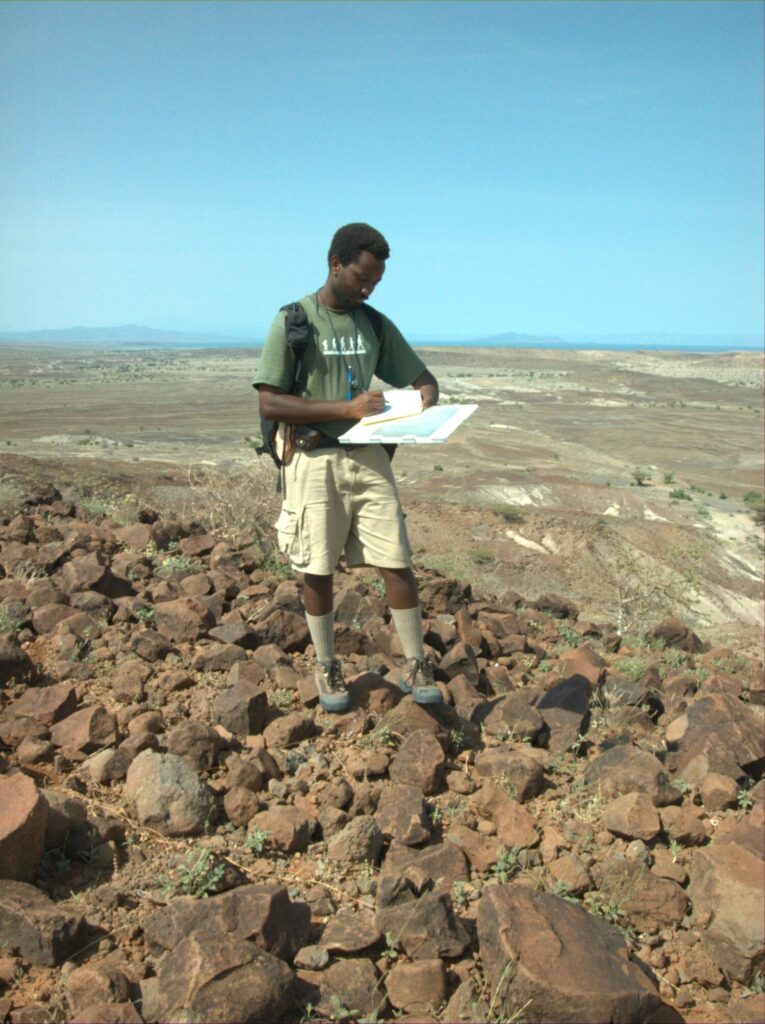
Q: Can you describe a memorable moment or highlight of your career so far?
Many of the memorable moments from my work happened while conducting fieldwork with Prof. Brown in the Turkana Basin. His unique ability to distinguish and correlate ancient rivers, lakes, and landscapes as we walked the outcrops made the seemingly monotonous rocks look very much alive. That ability of Prof. Brown looked magical to me when I started working with him in the field, and it continued captivating me every time we conducted fieldwork together for the many years that followed.
The most memorable moment with Prof. Brown took place in the Lomekwi area of Turkana Basin a day before the end of the summer field season in 1999. That was the day when he first identified a historic site where the cranium of what became a new hominin genus, Kenyanthropus platyops, was discovered by a team led by Drs. Meave and Louise Leakey. I still vividly remember Prof. Brown’s excitement soon after we came across the location of this site that he named LO6 North. At first, I could not comprehend the significance of that site, but I could tell it was very important based on the excitement. Prof. Brown took the rest of the day to explain the geological significance of that location in great detail as we traversed the site and its surrounding outcrops.
I came to learn that the new site was quite important because it indicates ancient habitats and depositional environments that were favorable for the likely occurrence of well-preserved hominid fossil. Prof. Brown demonstrated to me how the adjacent area in Lomekwi was also unique during the time interval that is represented by the new site. At that time a major lake, Lokochot Lake, that was many times larger than Lake Turkana covered most of the outcrop area in the basin. That was the moment I started aspiring to become like Prof. Brown. He recommended the new site to Dr. Meave Leakey and her team while on his way back from the field. I was lucky to witness the famous discovery of the Kenyanthopus platyops cranium by Justus Edung at the site a few days later.
Q: What does this award mean to you personally and professionally?
It is a great honor to receive this award. I am extremely happy. As a mentee of Prof. Brown, it is indeed a great feeling to realize that I will be the pioneer recipient of the award associated with his legacy. This award also presents me with an opportunity to pursue one of Prof. Brown’s wish list of novel geology projects.
It was in light of this award that I become a part-time Research Associate Professor with the Stony Brook University through the Turkana Basin Institute. The affiliation will enable me to mentor students, including local residents, who choose to study the geology of the Turkana Basin where many hominid fossils have been discovered. It will also provide me with a platform to continue working on Prof. Brown’s vision that inspired my project. The award will allow me to pursue this novel geology project that has the potential to significantly improve the geological context of hominid sites.
The primary objective of my project is to develop a new petrology-based geochronology approach that will extend the capability of the standard methods for dating hominid sites. Many outcrops that lack volcanic ash layers have proven to be quite challenging in terms of age determination, especially when they are separated by major faults. A good example is the eastern South Turkwel area of the Turkana Basin where hominid fossils have been discovered. In this example paleomagnetic polarity has offered multiple alternative ages, and the precision of biostratigraphy has been debatable. Unknown volcanic ash layer has been discovered at the top of section in the eastern area. The geology of the entire South Turkwel area was among the top priority projects of Prof. Brown, and I was privileged to conduct fieldwork there with him. My project will build upon this background and therefore focus on the area. I will utilize a combination of techniques including skills from Prof. Brown and my experience in reservoir petrology.


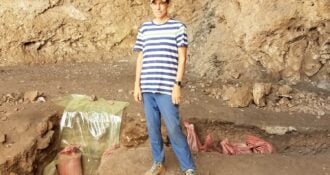
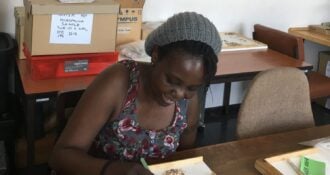
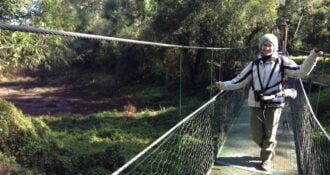

Comments 0